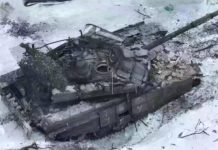Despite earnest requests, the Armed Forces of Ukraine will not receive MRH-90 Taipan helicopters from Australia.
Australian Government decided to dismantle all 45 decommissioned MRH-90 Taipan helicopters. Canberra explained its decision due to safety issues with these helicopters, it would be unsafe to try to operate them.
The MRH-90 Multi-Role Helicopter replaced the UH-1 Iroquois in 2008 and largely replaced the S-70A-9 Black Hawk between 2014 and 2018. In the summer of 2023, a Taipan crashed during a joint exercise between Australia and the US, killing four soldiers. In the fall of 2023, Canberra decided to decommission these helicopters earlier than expected. Initially slated for withdrawal in 2037, the helicopters have a history of problems, resulting in fleet-wide groundings over the years.

Ukraine, grappling with the air dominance of Russian forces, officially requested the Taipans in December, arguing that they are essential for bolstering their defense capabilities. Ukrainian supporters in Australia said that the helicopters could play a critical role on the Ukrainian front line, aiding in the fight for “freedom and democracy.“
Australian officials have maintained their stance on dismantling and burying the aging Taipan aircraft at a designated defense site. This decision stems from heightened concerns over the safety and reliability of the retiring Taipan fleet. The phased-out Taipans are set to be replaced by 40 UH-60M Black Hawk helicopters. However, as of now, only a handful of these US-manufactured aircraft have been delivered to Australia.

An Australian Defense spokesperson said that the remaining airframes and systems would be disposed of in an environmentally friendly and cost-effective manner. There are ongoing collaborative efforts with Airbus Australia Pacific and NATO Helicopter Industries to salvage essential spare parts from the MRH-90 fleet. The goal is to repurpose these components for use by other NH90 operators.
Australia has operated 47 MRH 90s since 2012. Despite offering superior range, speed, carrying capacity and poor weather performance to its rivals, the aircraft had been temporarily grounded several times previously due to serviceability and safety concerns.
The Taipan being an adaptation of the NH-90 type currently in service with a number of Nato countries. The MRH-90 featured an advanced composite airframe, designed for ballistic tolerance, a high level of crashworthiness, lower weight, and 30 per cent greater endurance than a metallic counterpart. The helicopter is 16.13m long and 5.23m high and has an empty weight of 6,400kg and a maximum take-off weight of 10,600kg. It is capable of conducting missions under difficult weather conditions. The four main rotor blades are also composed of composite materials, increasing fatigue strength and lifespan while providing for greater damage tolerance.
The cabin is designed to accommodate modular equipment packages to enable the rotorcraft to be rapidly reconfigured, providing for operational flexibility. In a troop-transport capacity, the cabin can accommodate up to 20 fully equipped soldiers, or up to 12 stretchers in a medical evacuation role, some light vehicles may also be transported; the main cabin is equipped with environmental control systems and sound proofing measures to improve passenger conditions.
The MRH-90 is the first helicopter in the world to be equipped with full fly-by-wire flight controls. A four-axis autopilot is also integrated with the fly-by-wire system, as are mission and navigation systems to enable greater autonomy during operations and to reduce pilot workload. The avionics system also consists of a mission system to manage tactical communications, sensors and flight planning, weather radar and forward looking infrared systems.
Power is provided by a pair of Rolls-Royce Turbomeca RTM322 engine, which generate an output power of 2,230 shalf horsepower each. This powerful engine incorporates a four-bladed main rotor and a high-position tail rotor helped the helicopter can fly at a maximum speed of 300km/h and has a range of 800km. It can operate at a service ceiling of 20,000ft and can climb at a rate of 8m per second.
Australia has had something of a troubled history with its Taipans. Severe procurement and operating cost blowouts, mechanical failures, high maintenance costs, difficulty in obtaining spare parts, and several whole-fleet groundings have plagued the aircraft. Australian military authorities were also disappointed with the helicopter’s operational fitness for purpose, particularly their capacity for carrying sufficient fully-laden combat troops, was another black mark against the Taipan.
Despite mounting pressure from the Ukrainian community, the final decision rests with the Australian government. Australia is a significant non-NATO contributor to Ukraine’s war effort.


















